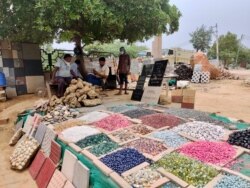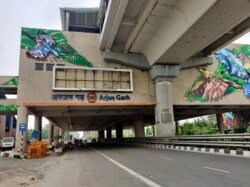As India races past the 1 million mark of COVID 19 cases, public health experts warn that the pandemic is set to accelerate with the emergence of new hotspots in places that so far had escaped the ravages of the virus, including its vast countryside.
More than half the cases were added in the last fortnight as the country reached a record high of nearly 35,000 cases in recent days. Even these numbers could be off the mark as testing remains sparse in a country of 1.3 billion say public health experts.
“From my perspective, it is gross underreporting, my hunch is that numbers would be much larger,” according to Kapil Yadav, assistant professor of Community Medicine at the premier All India Institute of Medical Sciences in New Delhi. “It will run its course and we may or may not see the typical peak we have seen in Western developed countries.”
That is because in the vast country, different places are seeing surges at different times – while Delhi and the states of Maharashtra and Tamil Nadu accounted for a bulk of the cases until recently, infections now are spiralling in cities like Bengaluru and the northeastern state of Bihar, home to more than 100 million people and one of India’s poorest states.
Virologists who had warned that the highly contagious coronavirus will hit like an avalanche in a country of densely packed cities and huge urban slums where social distancing is impossible, say India’s long and stringent 10-week lockdown only delayed the onset of the pandemic, but could not stop it.
The virus has marched on since cities began opening in June – markets are up and running and many businesses are open.
The spurt in cases has led to huge uncertainties as India tries to get its broken economy back on track. There are few customers in markets and vendors trying to sell their wares on roadsides are struggling because traffic is still thin.
In the mega cities of Delhi and Mumbai, metro and train services, the lifeline of these cities, have not been restored, although they are seeing a dip in new cases. Schools and colleges remain shut.
Millions of people have been ordered back into lockdown in the past week – the sprawling eastern state of Bihar, the Information Technology hub of Bengaluru and the tourist city of Goa were among several places that clamped stay-at-home orders.
Public health experts warn, though, that shutdowns will do little to stop the havoc wrought by the virus.
“The only justification for lockdowns is giving your public health system time to prepare,” says Yadav. “If we have not prepared in five months, another week is not going to make much of a difference.”
Concerns are high about the dismal state of health infrastructure in rural areas where even primary healthcare facilities often are lacking and people must travel to cities to get to a hospital.
“Should the virus start spreading, there definitely will be challenges. All we can hope is that facilities will be extended to reach the rural areas,” says K. Srinath Reddy, president of the Public Health Foundation of India in New Delhi.
Worries are especially high over Bihar, a largely rural and poor state that has emerged as a new hotspot. Its surging cases are blamed on laxity when cases were low – a wedding last month in its capital Patna with 300 guests is reported to have become a super spreader event. Authorities say tens of thousands of migrants who returned in recent days have brought the virus from cities.
Reddy is hopeful, however, the spread will be slower in villages than in urban areas. “The virus can hitchhike long distances easily in cities where people move fast, whereas in villages, people move around at a much slower pace and meet less people, so it does not have the same mobility.”
The Times of India newspaper warned in an editorial of the devastating economic costs being extracted by lockdowns as millions lose jobs and incomes. “A cyclical lifting and imposing of lockdowns also sends out a very wrong and dangerous message: That it’s okay to let the guard down when the lockdown is lifted.”
Public health experts also say the public is not getting the right message from lockdowns.
“People believed that lockdowns are a strong solution for an enemy we have not seen, this will stop the virus and you don’t have to do anything more,” says virologist Jacob John. “There has been no socio-cultural behaviour change education – that alone will make people understand that if I wear a mask, it is not for me alone but for my wife and children and parents at home.”
India is nonetheless drawing some consolation from its relatively low death rate – the more than 26,000 deaths counted so far are lower than in many Western countries. Experts say the nation’s much younger population might be helping the country hold mortality rates down.






